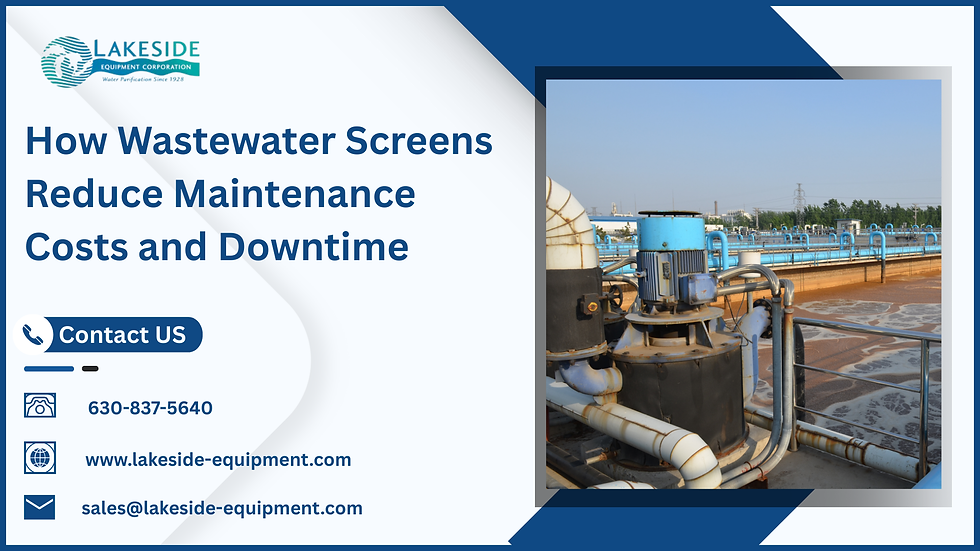Role of Wastewater Clarifier in Wastewater Biological Treatment Plants
- lakesideequipment

- Nov 21, 2024
- 2 min read
Effective wastewater treatment has become a necessary precondition for both public health and environmental conservation in the present world. The ever-increasing populations and industrial activities in recent times have necessitated the need for efficient water treatment systems, and it is more so today. The four critical components of a wastewater treatment facility are said to include the wastewater clarifier, screens, bar screens, and biological treatment processes.
Each of these provides an indispensable role in ensuring that wastewater is treated to a level it is safely acceptable for use or return to the environment. In this post, we will provide a comprehensive understanding of all these components.
Wastewater Clarifier: Setting Solids for cleaner water
The wastewater clarifier is one of the utmost important parts of the treatment system prepared to remove suspended solids. Whenever such wastewater enters the clarifier, velocity decreases. Heavier solids, like dirt, sand, and other matters, settle at the bottom of the tank because of gravity. This process is known as sedimentation by which the solid waste may get separated from the liquid portion. Evidently, the burden on the following stages of treatment declines dramatically.
Wastewater Screens: Pre-Treatment for Solids Removal
Water treatment screens are often the first line of defense for all wastewater entering a clarifier. These actuators prevent large items, including sticks, plastics, rags, and other objects, from causing additional damage to pumps, pipes, or other treatment equipment. Large debris should be removed early in the treatment process to ensure that the plant operates with maximum efficiency at the lowest cost.
Wastewater Bar Screen: Specialized Solids Capture
A wastewater bar screen is a type of mechanical screen used to capture coarse solids present in wastewater. They consist of parallel bars with gaps between them to let water pass through while obstructing larger objects from moving any further downstream. Once captured, the solids are manually or mechanically removed using the rake or conveyor system and disposed of properly.
By taking away large debris that might otherwise damage or block equipment, bar screens help to streamline the overall treatment process with a view to serving both infrastructure and the environment.

Wastewater Biological Treatment: Removing Organic Matter
After wastewater is clarified or suspended coarse material with large debris has been removed, the next step in the treatment process often involves biological treatment. This type of treatment heavily relies on the use of microorganisms like bacteria and protozoa to break down the organic matter present in the wastewater. These microorganisms eat the pollutants that will degrade the organic material into simpler substances that are subsequently removed from the water.
This type of treatment is remarkably effective in removing biochemical oxygen demand and chemical oxygen demand—the two measurements most people use to determine the quality of water. Beyond improving water quality, wastewater biological treatment is environmentally friendly because it eliminates almost all requirements for harmful chemicals or secondary energy-hungry processes.
Conclusion
Each component of the wastewater treatment process - wastewater clarifier, screens, bar screen, and wastewater biological treatment is very important in ensuring that wastewater is flushed free of impurities before it is returned to the environment. They generally ensure that all water bodies are safe from pollution due to their proficiency in removing solids, debris, and other forms of harmful pollutants.




Comments